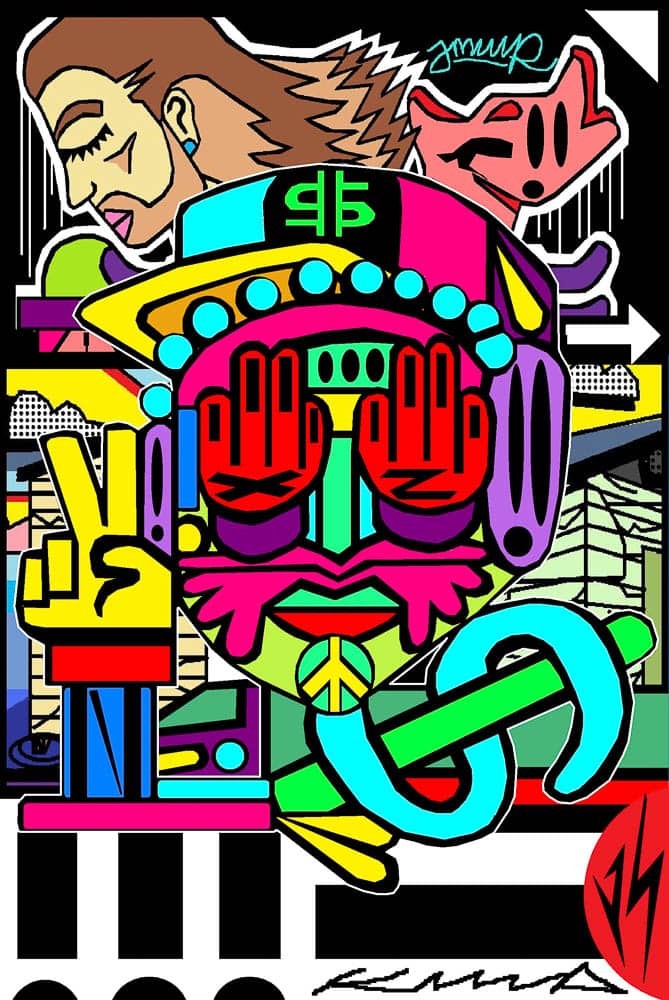The Keeping House is a place to respectfully appreciate the stories that have been generously shared by Australian First Nations thinkers and makers.
“A sense of place, history, and knowing is always present in First Nations fibre work, whether old or new: these meanings and associations are as embodied in the materials as they are in the processes of production.”
Freya Carmichael
✿
 A driftwood testament - Dean Greeno continues his ancestors' practice of using dead trees as memorials.
A driftwood testament - Dean Greeno continues his ancestors' practice of using dead trees as memorials.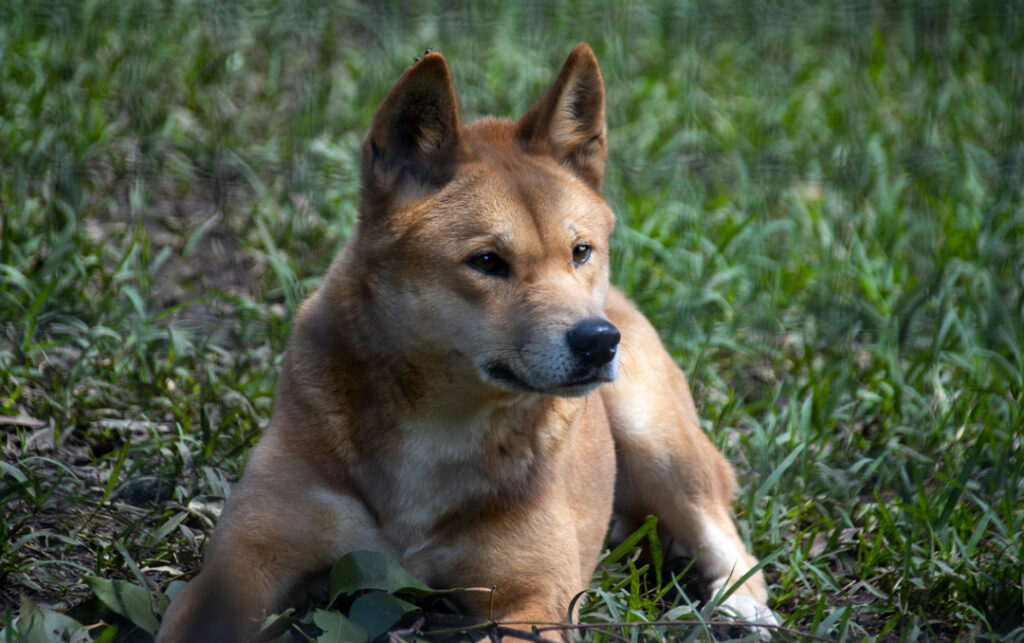 From My Dingo Soul to Your Hearts - While there are moves to revoke its protection, Aunty Dingo shares two poems in defence of Australia's apex land predator.
From My Dingo Soul to Your Hearts - While there are moves to revoke its protection, Aunty Dingo shares two poems in defence of Australia's apex land predator.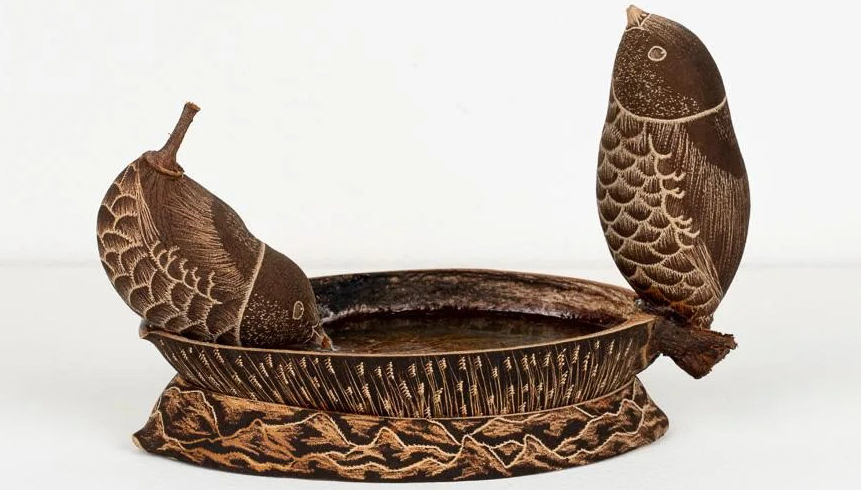 Russell “Wossy” Davey ✿ Carving stories, protecting Country - Russell "Wossie" Davey talks about the many uses of the boab nut and how it helps him tell the stories that keep the connection to Country strong.
Russell “Wossy” Davey ✿ Carving stories, protecting Country - Russell "Wossie" Davey talks about the many uses of the boab nut and how it helps him tell the stories that keep the connection to Country strong. Nation Building practices in an on-going colonial era - Jules and Jayne Christian share their journey to bring Dharug people together as mob on Country to help contest ongoing colonisation.
Nation Building practices in an on-going colonial era - Jules and Jayne Christian share their journey to bring Dharug people together as mob on Country to help contest ongoing colonisation. Bonyi ✿ A seasonal gathering of weavers on Country - Freja Carmichael reflects on a gathering of weavers at Munimba-ja to celebrate the bonyi nut harvest.
Bonyi ✿ A seasonal gathering of weavers on Country - Freja Carmichael reflects on a gathering of weavers at Munimba-ja to celebrate the bonyi nut harvest.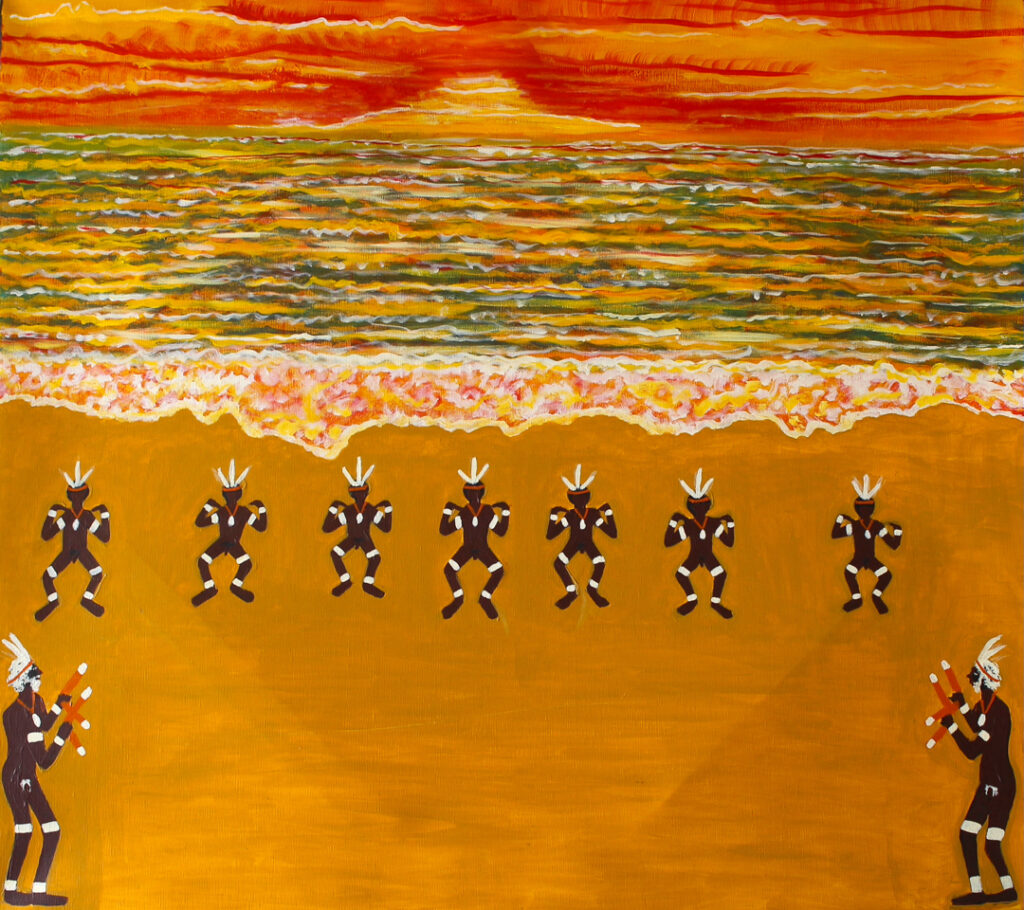 Syd Bruce Shortjoe & Bernard Singleton ✿ Men of Country - Jack Wilkie-Jans writes about two artists from Cape York Peninsula whose connection to Country includes Men’s Shed and cultural maintenance.
Syd Bruce Shortjoe & Bernard Singleton ✿ Men of Country - Jack Wilkie-Jans writes about two artists from Cape York Peninsula whose connection to Country includes Men’s Shed and cultural maintenance.  Wayne Martin Maranganji ✿ Painting culture, painting country - Angie Faye Martin writes about a cattleman painter, who connects to their shared Country through his art and commissions.
Wayne Martin Maranganji ✿ Painting culture, painting country - Angie Faye Martin writes about a cattleman painter, who connects to their shared Country through his art and commissions. Anne Nginyangka Thompson ✿ My favourite place out bush - Anne Nginyangka Thompson talks about her commitment to preserving culture and Country through her ceramic work.
Anne Nginyangka Thompson ✿ My favourite place out bush - Anne Nginyangka Thompson talks about her commitment to preserving culture and Country through her ceramic work. Long dance to home - Dominic White continues the dance of his forebears with a material art that rediscovers Country.
Long dance to home - Dominic White continues the dance of his forebears with a material art that rediscovers Country.  Ikuntji Style: In conversation at afternoon tea - Bowie Dunne speaks with Western Desert textile artist Keturah Zimran about her designs inspired by Country.
Ikuntji Style: In conversation at afternoon tea - Bowie Dunne speaks with Western Desert textile artist Keturah Zimran about her designs inspired by Country.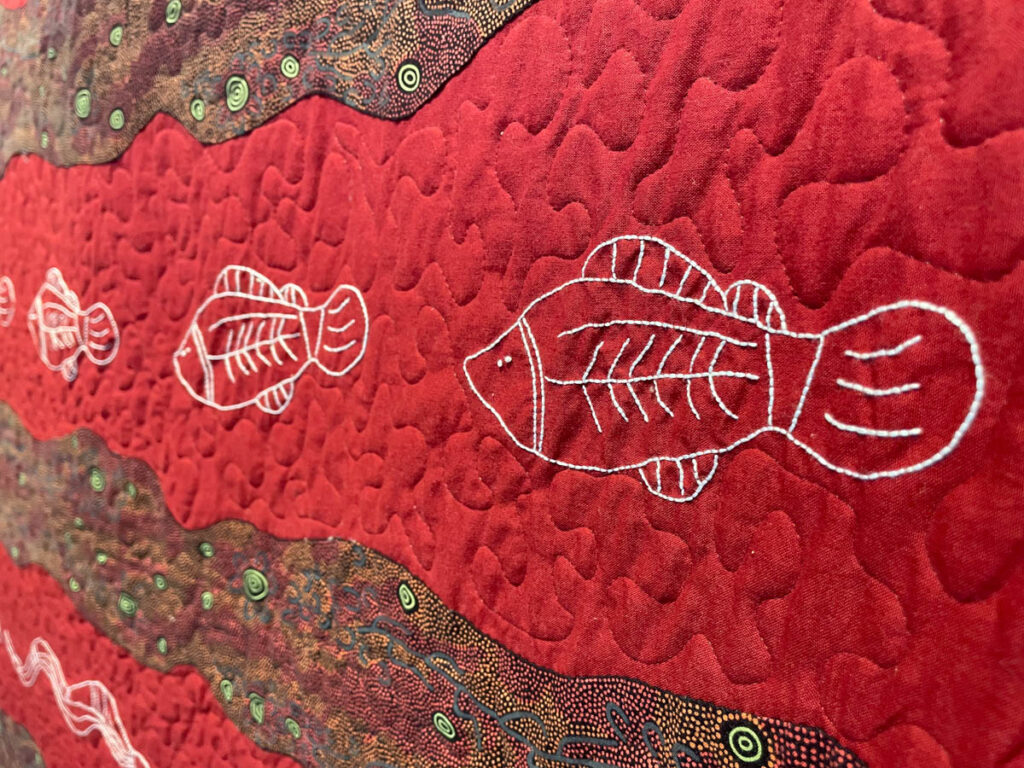 Kate Harding ✿ Memories to keep you warm - The Unleashed exhibition at Artisan features compelling quilts by Kate Harding that evoke memories of country.
Kate Harding ✿ Memories to keep you warm - The Unleashed exhibition at Artisan features compelling quilts by Kate Harding that evoke memories of country. Australia or Bandaiyan? - Bardi Elder, Aunty Munya Andrews, writes about her people's name for "Australia", which describes a bisexual being.
Australia or Bandaiyan? - Bardi Elder, Aunty Munya Andrews, writes about her people's name for "Australia", which describes a bisexual being. Jenni Kemarre Martiniello’s Freshwater Saltwater Weave - Mel George writes about Jenni Kemarre Martiniello's glass works that transmogrify ancient fibre forms.
Jenni Kemarre Martiniello’s Freshwater Saltwater Weave - Mel George writes about Jenni Kemarre Martiniello's glass works that transmogrify ancient fibre forms.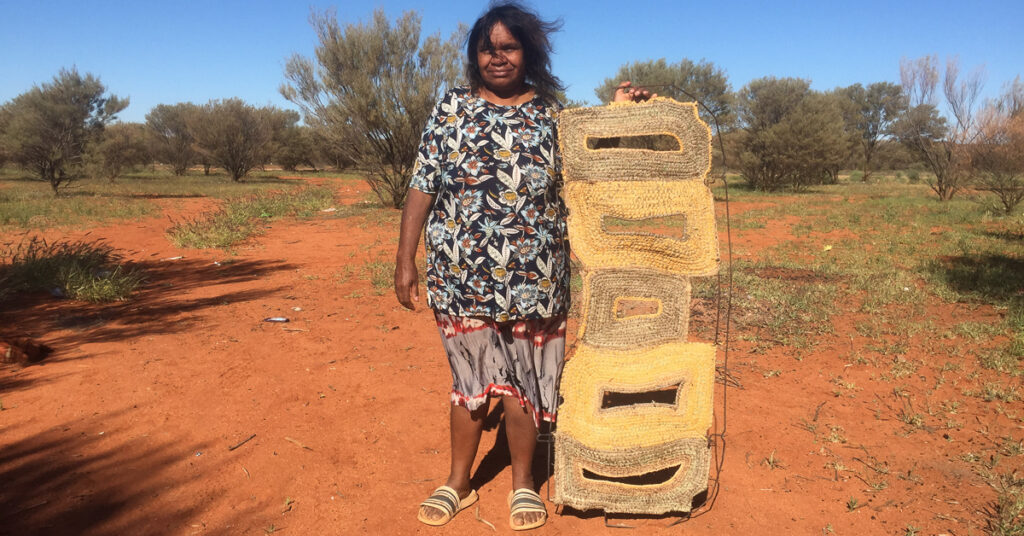 A Tjanpi world: Filled up with stories from the land - Kevin Murray writes about four recent bodies of work that show how Tjanpi Desert Weavers is now taking its epic stories to the wider world.
A Tjanpi world: Filled up with stories from the land - Kevin Murray writes about four recent bodies of work that show how Tjanpi Desert Weavers is now taking its epic stories to the wider world. Philomena Yeatman ✿ Hairy Men and Little People - Francoise Lane shares the story of Yarrabah artist Philomena Yeatman that inspired a recent collection of ceramic figures.
Philomena Yeatman ✿ Hairy Men and Little People - Francoise Lane shares the story of Yarrabah artist Philomena Yeatman that inspired a recent collection of ceramic figures.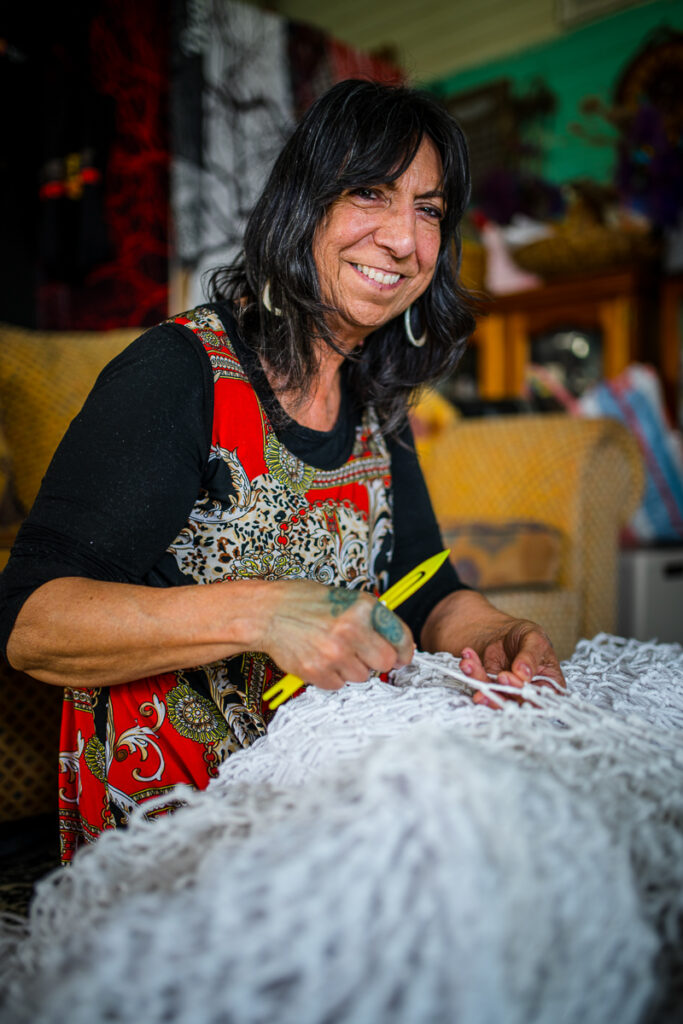 Glenda Nicholls ✿ Weaving storylines - Glenda Nicholls weaves fish nets and crafts feather flowers that continue a storyline passed down through her family around Milloo, otherwise known as the Murray River.
Glenda Nicholls ✿ Weaving storylines - Glenda Nicholls weaves fish nets and crafts feather flowers that continue a storyline passed down through her family around Milloo, otherwise known as the Murray River. James Tylor ✿ Kaurna tool kit - Our November Laurel goes to James Tylor for his re-creation of the Kaurna tool kit, reflecting the revival of cultural skills across the wider world.
James Tylor ✿ Kaurna tool kit - Our November Laurel goes to James Tylor for his re-creation of the Kaurna tool kit, reflecting the revival of cultural skills across the wider world.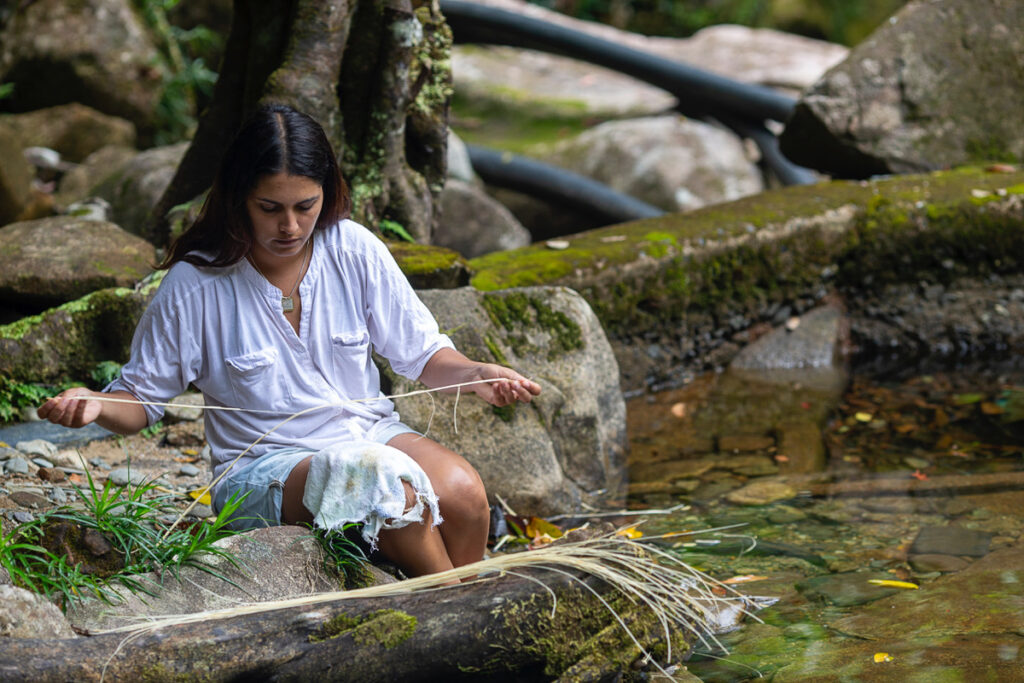 long water: fibre stories - Freja Carmichael reflects on artists whose work provides a conduit for the spirit of fresh and salt water.
long water: fibre stories - Freja Carmichael reflects on artists whose work provides a conduit for the spirit of fresh and salt water. Vessels of love: Darug weaving that connects generations, community and country - Jules Christian reflects on how weaving helps her cope with the fear of abandonment that is a legacy of colonisation.
Vessels of love: Darug weaving that connects generations, community and country - Jules Christian reflects on how weaving helps her cope with the fear of abandonment that is a legacy of colonisation.  He stood up! ✿ Winds of change at the Ancient Now symposium - The Ancient Now symposium heralded not only new creative pathways to China, but also a changing world view inspired by the dragons among us.
He stood up! ✿ Winds of change at the Ancient Now symposium - The Ancient Now symposium heralded not only new creative pathways to China, but also a changing world view inspired by the dragons among us.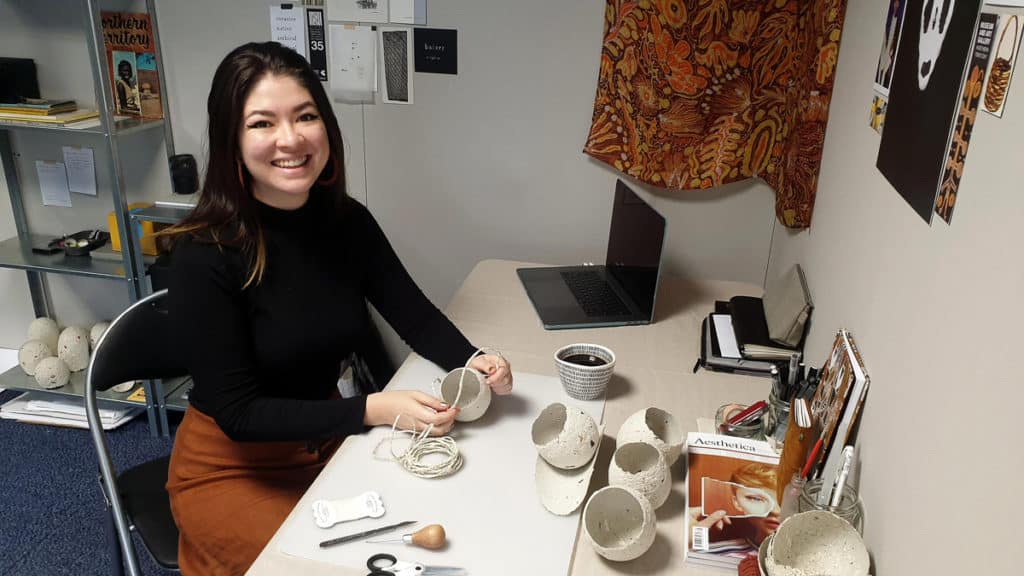 Jenna Lee ✿ Folds of memory - Jenna Lee's Memorise series shows how the process of folding can have strong symbolic meaning. It begins with an Instagram challenge...
Jenna Lee ✿ Folds of memory - Jenna Lee's Memorise series shows how the process of folding can have strong symbolic meaning. It begins with an Instagram challenge...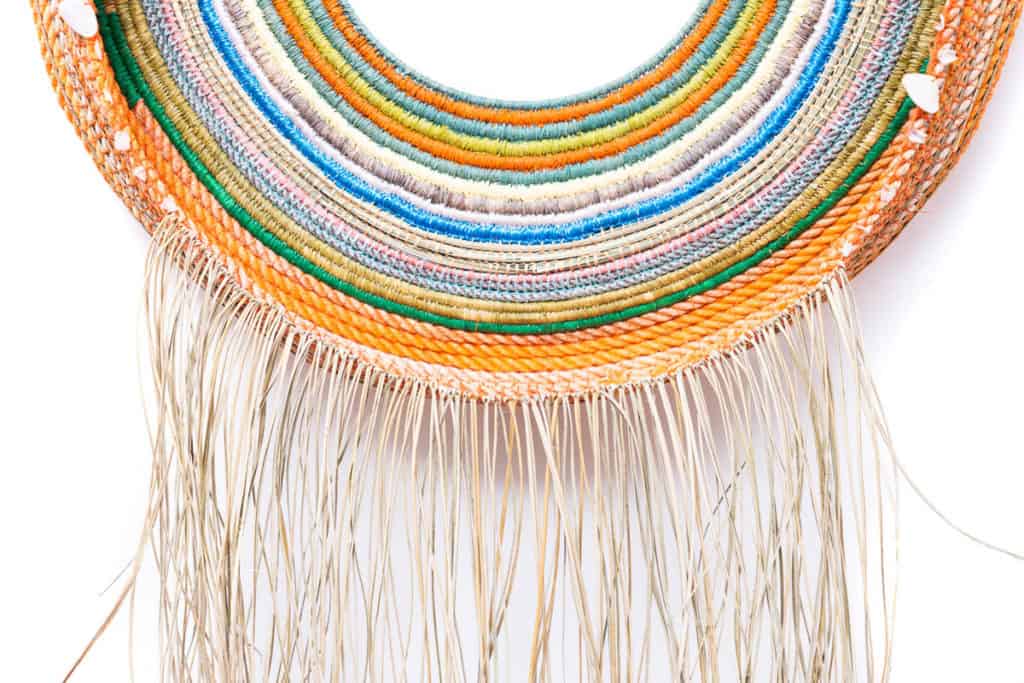 Elisa-Jane Carmichael ✿ Weaving with ancestors - Sally Butler writes about Quandamooka artist Elisa-Jane Carmichael, who interprets her fibre tradition in stunning new forms
Elisa-Jane Carmichael ✿ Weaving with ancestors - Sally Butler writes about Quandamooka artist Elisa-Jane Carmichael, who interprets her fibre tradition in stunning new forms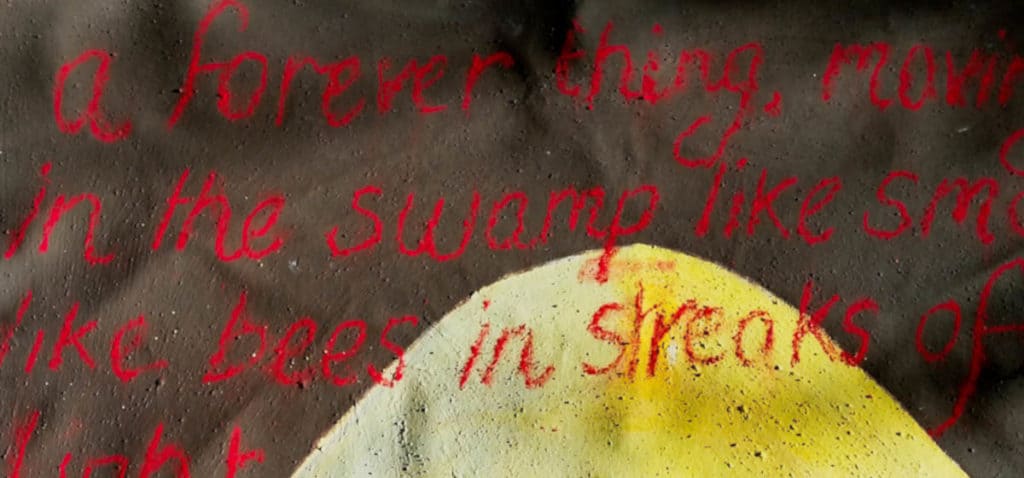 A rainbow serpent theory of time - For Tyson Yunkaporta, the rainbow serpent offers an alternative to the circular world of second peoples.
A rainbow serpent theory of time - For Tyson Yunkaporta, the rainbow serpent offers an alternative to the circular world of second peoples.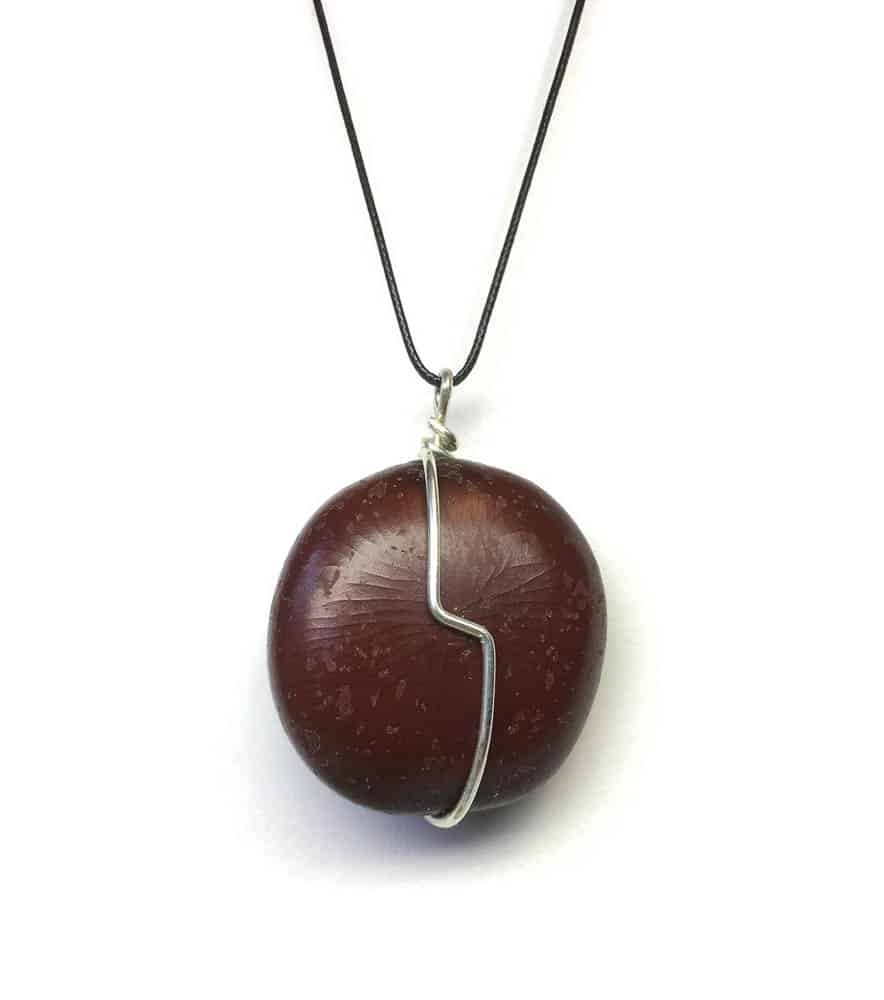 Emily Beckley ✿ A romantic side of the Torres Strait - The Garland journey has coincided with the evolution of the Indigenous Jewellery Project. Emily McCulloch Childs writes about the solo exhibition by Emily Beckley, demonstrating the potential of this important project.
Emily Beckley ✿ A romantic side of the Torres Strait - The Garland journey has coincided with the evolution of the Indigenous Jewellery Project. Emily McCulloch Childs writes about the solo exhibition by Emily Beckley, demonstrating the potential of this important project. Claylines: Berder, Gaba, Urrknga and Wantja - The Remote Communities Ceramics Network has been active for at least a decade providing exchange between Aboriginal clay artists across northern Australia. The latest results of this network can be seen in a new exhibition at Nishi Gallery in Canberra.
Claylines: Berder, Gaba, Urrknga and Wantja - The Remote Communities Ceramics Network has been active for at least a decade providing exchange between Aboriginal clay artists across northern Australia. The latest results of this network can be seen in a new exhibition at Nishi Gallery in Canberra. 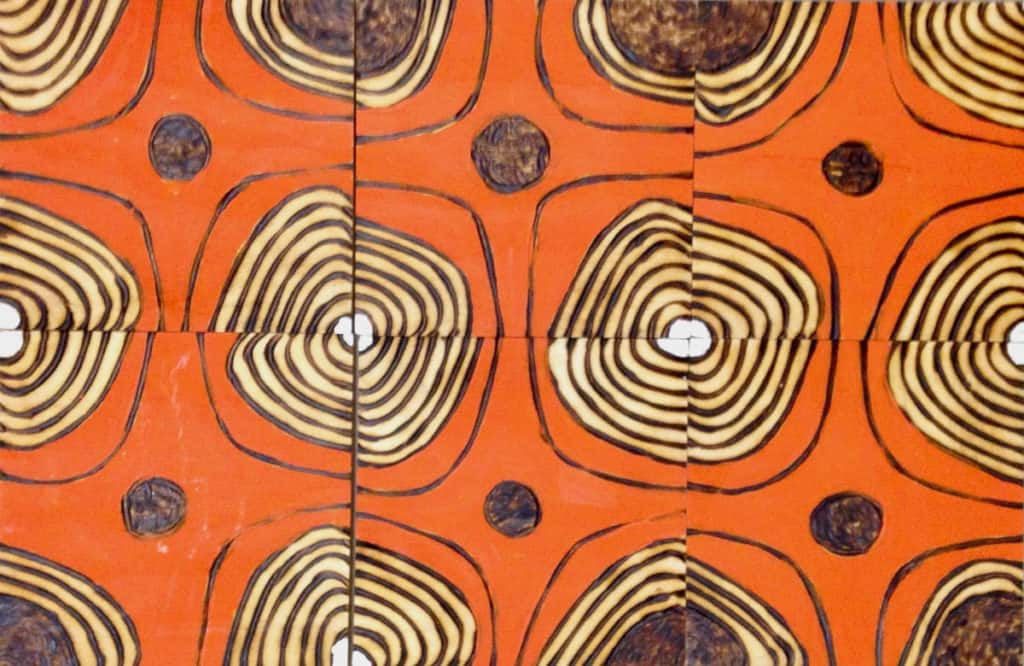 Punu ✿ Living wood - An exhibition from Maruku Arts at Uluru contains striking new works in burnt wood, punu, and "walka" board. "Walka" is a design that tells of Tjukurpa, the law of Anangu from Australian Central and Western Desert.
Punu ✿ Living wood - An exhibition from Maruku Arts at Uluru contains striking new works in burnt wood, punu, and "walka" board. "Walka" is a design that tells of Tjukurpa, the law of Anangu from Australian Central and Western Desert. 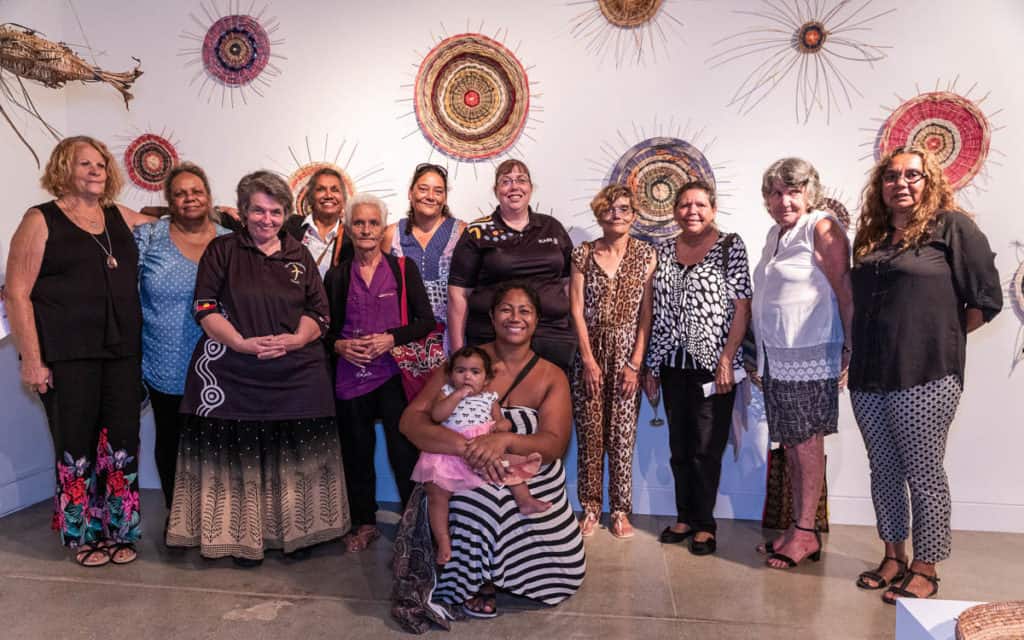 Yirran Miigaydhu Aboriginal Women Weavers - The Yirran Miigaydhu weavers exhibition at Cement Fondu profiles the influence of Thawaral artist Phyllis Stewart.
Yirran Miigaydhu Aboriginal Women Weavers - The Yirran Miigaydhu weavers exhibition at Cement Fondu profiles the influence of Thawaral artist Phyllis Stewart. 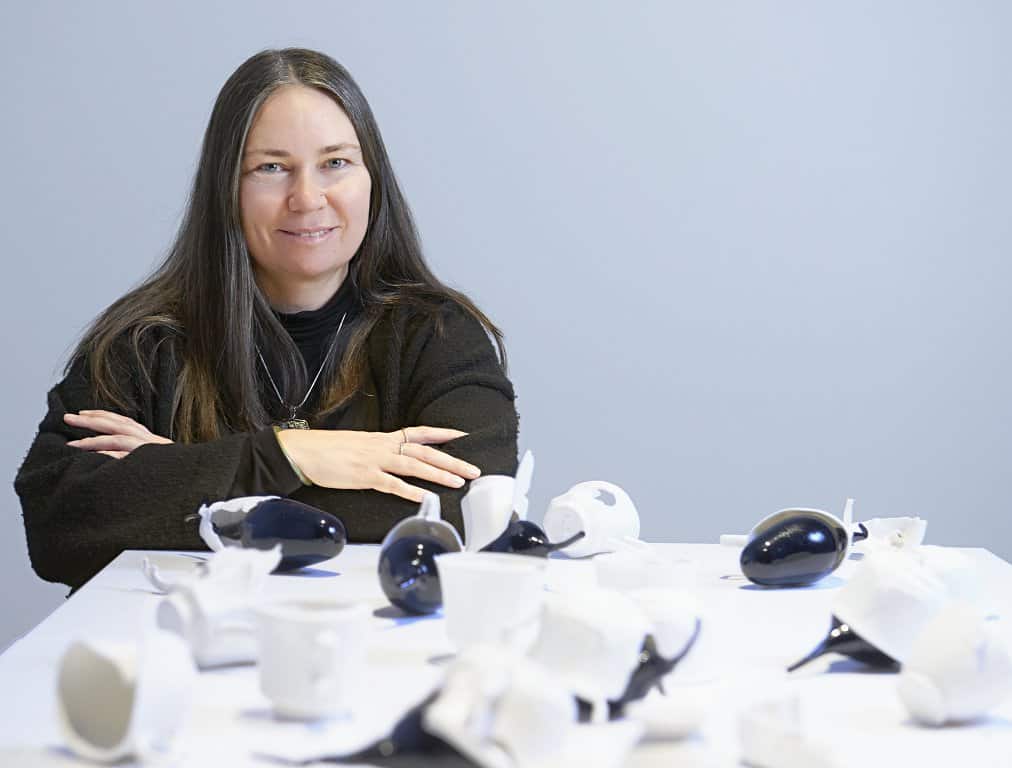 Yhonnie Scarce ✿ Colonisation in black and white - The Shepparton Art Museum recently announced the winner of the 2018 Indigenous Ceramic Award as Yhonnie Scarce, for her work, Servant and Slave, 2018.
Yhonnie Scarce ✿ Colonisation in black and white - The Shepparton Art Museum recently announced the winner of the 2018 Indigenous Ceramic Award as Yhonnie Scarce, for her work, Servant and Slave, 2018. Jenuarrie – My story - Jenuarrie is a Queensland artist who has drawn on the Lapita ceramic tradition of her region to produce striking unique works. Here is an extract from a recent book Gift of Knowledge, where Jenuarrie tells the story of how she came to produce this work, and the values that guide her life.
Jenuarrie – My story - Jenuarrie is a Queensland artist who has drawn on the Lapita ceramic tradition of her region to produce striking unique works. Here is an extract from a recent book Gift of Knowledge, where Jenuarrie tells the story of how she came to produce this work, and the values that guide her life. Judith-Rose Thomas tunapri journeys through painting - Judith-Rose Thomas is a palawa artist who features in our On Offer exhibition. She has a life-long interest in the petroglyphs found in northern Tasmania. These have inspired a series of paintings that seek to animate those ancient designs.
Judith-Rose Thomas tunapri journeys through painting - Judith-Rose Thomas is a palawa artist who features in our On Offer exhibition. She has a life-long interest in the petroglyphs found in northern Tasmania. These have inspired a series of paintings that seek to animate those ancient designs.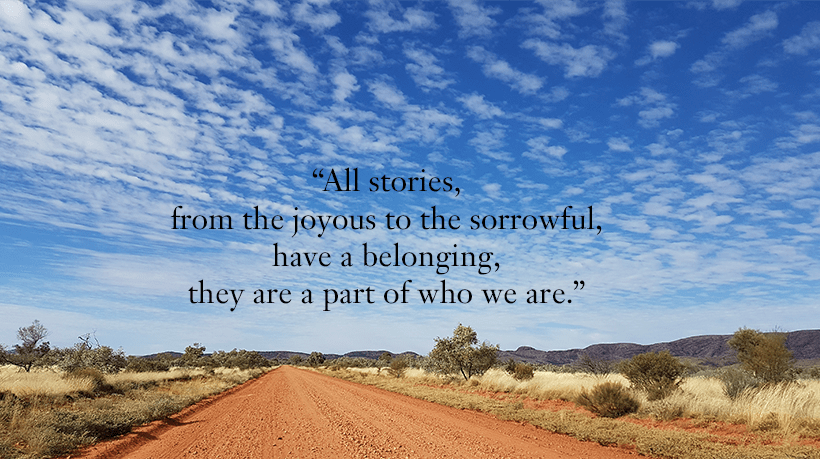 Quarterly essay – Ngurra: Finding our way home - Glenn Iseger-Pilkington takes us on a journey to Ngaanyatjarra Country, to work with people whose sense of home seems timeless. The writer thoughtfully considers the meaning of this for someone of mixed Aboriginal identity. This generous story contains a profound message for settler colonial nations in the search for guidance from their Indigenous cultures.
Quarterly essay – Ngurra: Finding our way home - Glenn Iseger-Pilkington takes us on a journey to Ngaanyatjarra Country, to work with people whose sense of home seems timeless. The writer thoughtfully considers the meaning of this for someone of mixed Aboriginal identity. This generous story contains a profound message for settler colonial nations in the search for guidance from their Indigenous cultures. Fibre to metal: Mudlark Jilinbirri Metals from Carnarvon - Jilinbirri is the Yamatji word for an Australian bird, also known as the mudlark in Western Australia. It is the title of an exhibition by Yamatji fibre artists whose work was transformed into bronze.
Fibre to metal: Mudlark Jilinbirri Metals from Carnarvon - Jilinbirri is the Yamatji word for an Australian bird, also known as the mudlark in Western Australia. It is the title of an exhibition by Yamatji fibre artists whose work was transformed into bronze.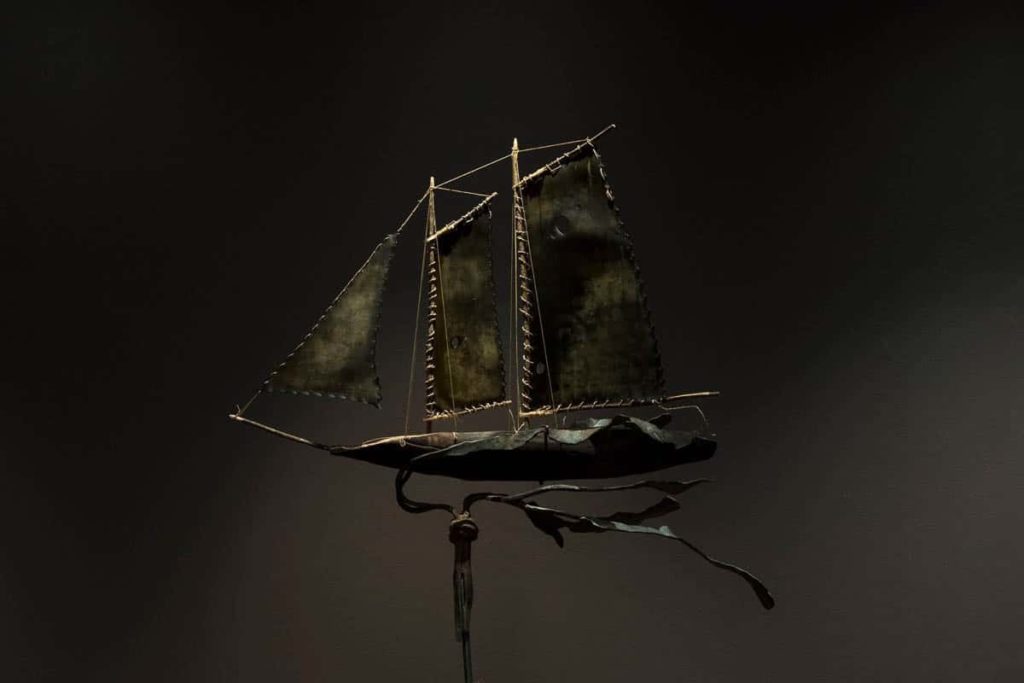 Baluk Arts: Storied objects tied to Country - Tallara Gray and Neil Aldum talk about the collaboration with Baluk Arts to develop objects that tell powerful life stories for the exhibition In Cahoots.
Baluk Arts: Storied objects tied to Country - Tallara Gray and Neil Aldum talk about the collaboration with Baluk Arts to develop objects that tell powerful life stories for the exhibition In Cahoots.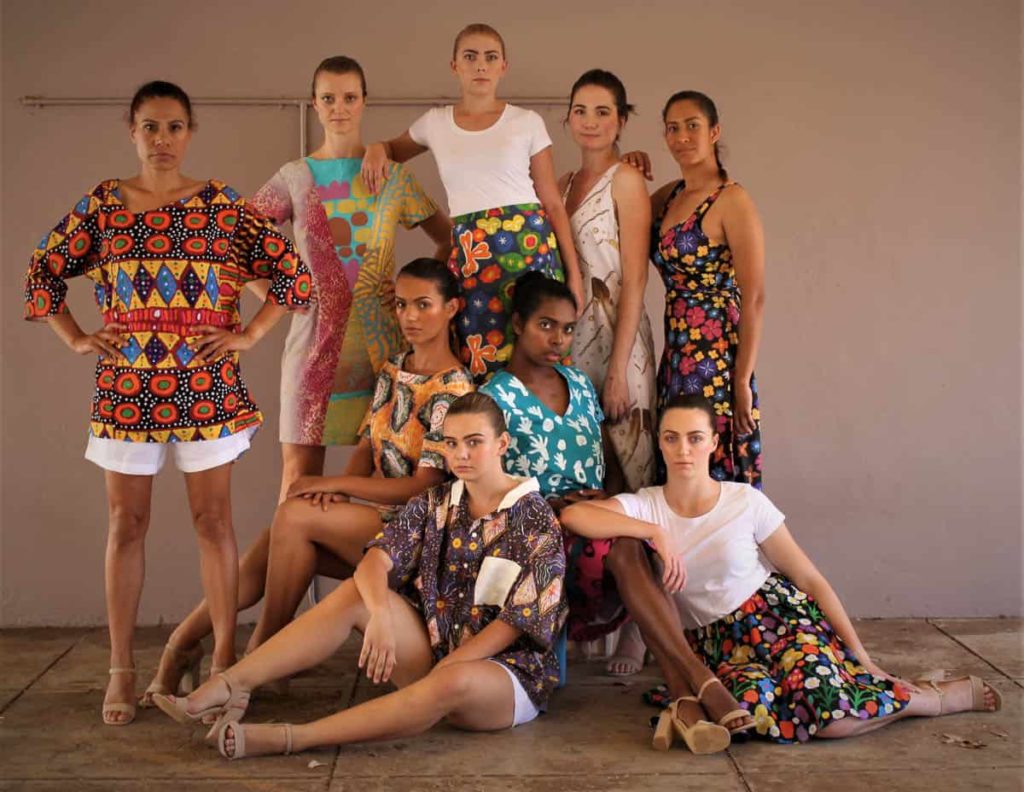 Developing fabric designs at Ikuntji Artists - Chrischona Schmidt recounts the new collections of screen-printed fabrics coming from this creative central Aboriginal community.
Developing fabric designs at Ikuntji Artists - Chrischona Schmidt recounts the new collections of screen-printed fabrics coming from this creative central Aboriginal community. 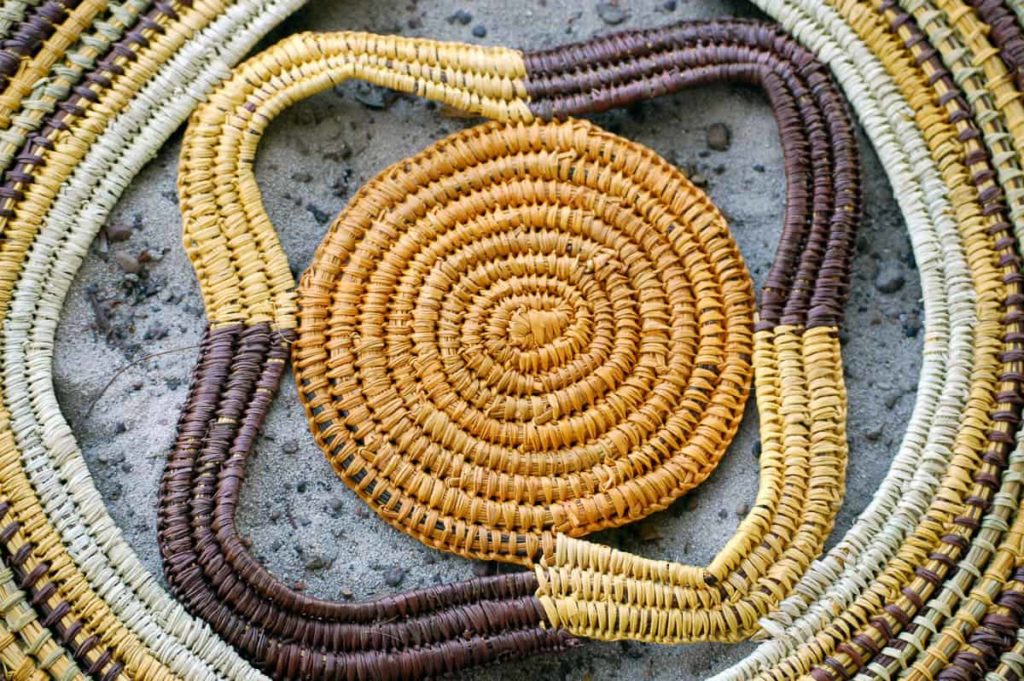 Wakuwal: Threads of reconciliation - Peter Botsman's Wakuwal braids together the fibre traditions of Yolngu like Batumbil Burarrwanga with the journey of Irish prisoners to Australia
Wakuwal: Threads of reconciliation - Peter Botsman's Wakuwal braids together the fibre traditions of Yolngu like Batumbil Burarrwanga with the journey of Irish prisoners to Australia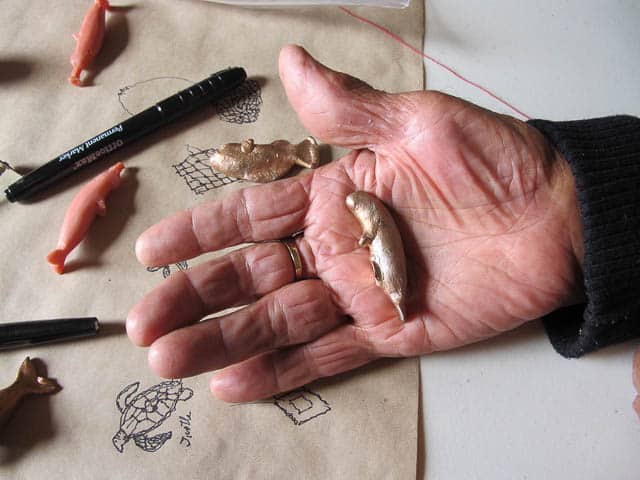 A silent conversation with Jimmy Poland - Helena Bogucki reflects on her collaboration with Jimmy Poland for "Pieces of Gutharraguda (Shark Bay)".
A silent conversation with Jimmy Poland - Helena Bogucki reflects on her collaboration with Jimmy Poland for "Pieces of Gutharraguda (Shark Bay)". 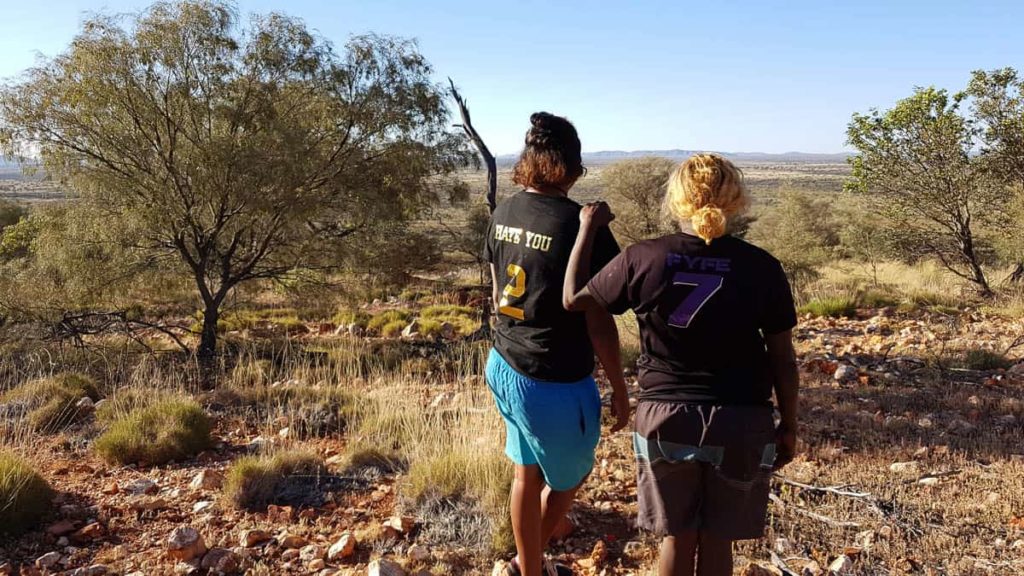 Ngurra: Finding our way home - Glenn Iseger-Pilkington finds a sense of home with the Ngaanyatjarra community, grounded and connected through Country.
Ngurra: Finding our way home - Glenn Iseger-Pilkington finds a sense of home with the Ngaanyatjarra community, grounded and connected through Country. 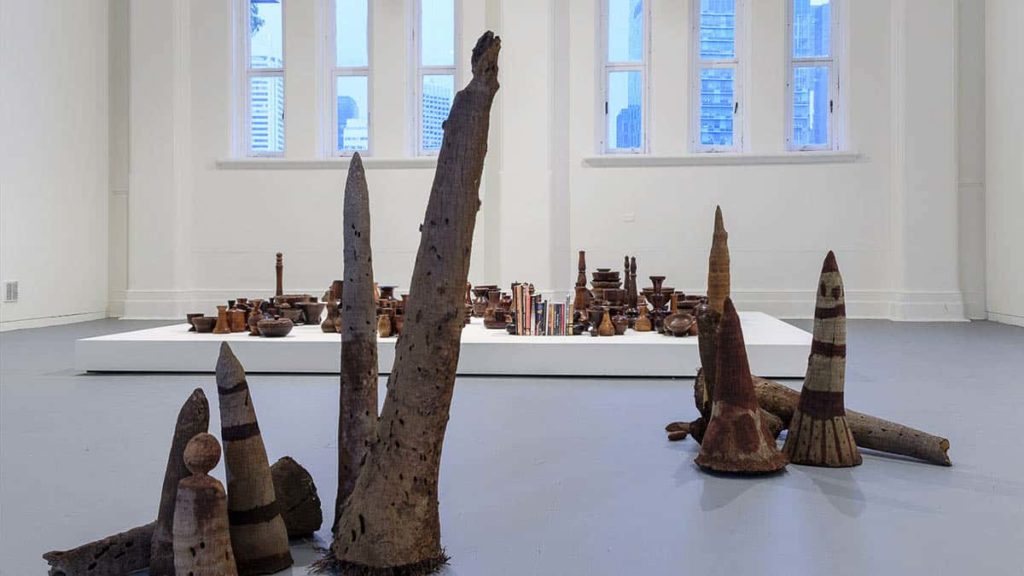 The Nullians - Sharyn Egan reflects on her work Nullians which fossicks settler-colonial history from the turned balga craft objects abandoned in second-hand shops.
The Nullians - Sharyn Egan reflects on her work Nullians which fossicks settler-colonial history from the turned balga craft objects abandoned in second-hand shops.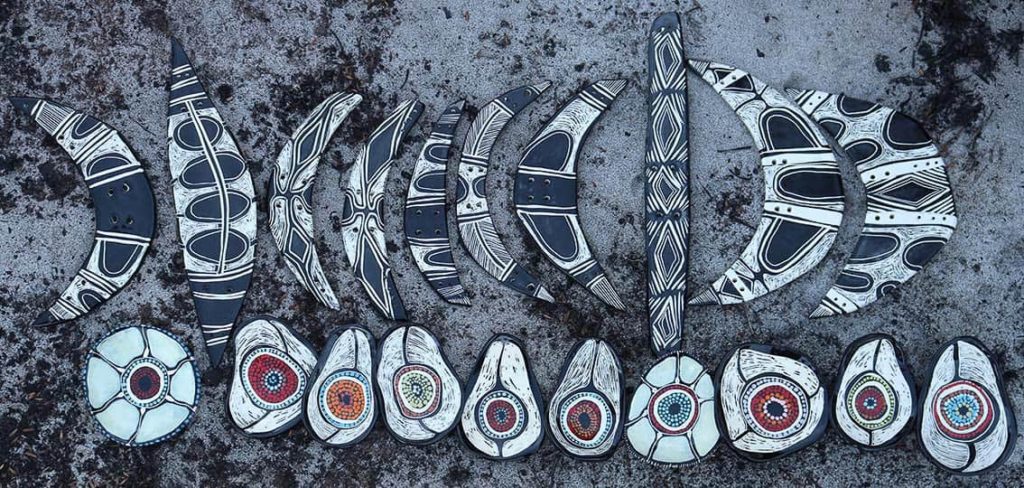 Sgraffito Country: the ceramic art of Penny Evans - Freja Carmichael visits Penny, who uses sgraffito in her ceramics to reflect her Kamilaroi/Gomeroi heritage.
Sgraffito Country: the ceramic art of Penny Evans - Freja Carmichael visits Penny, who uses sgraffito in her ceramics to reflect her Kamilaroi/Gomeroi heritage. 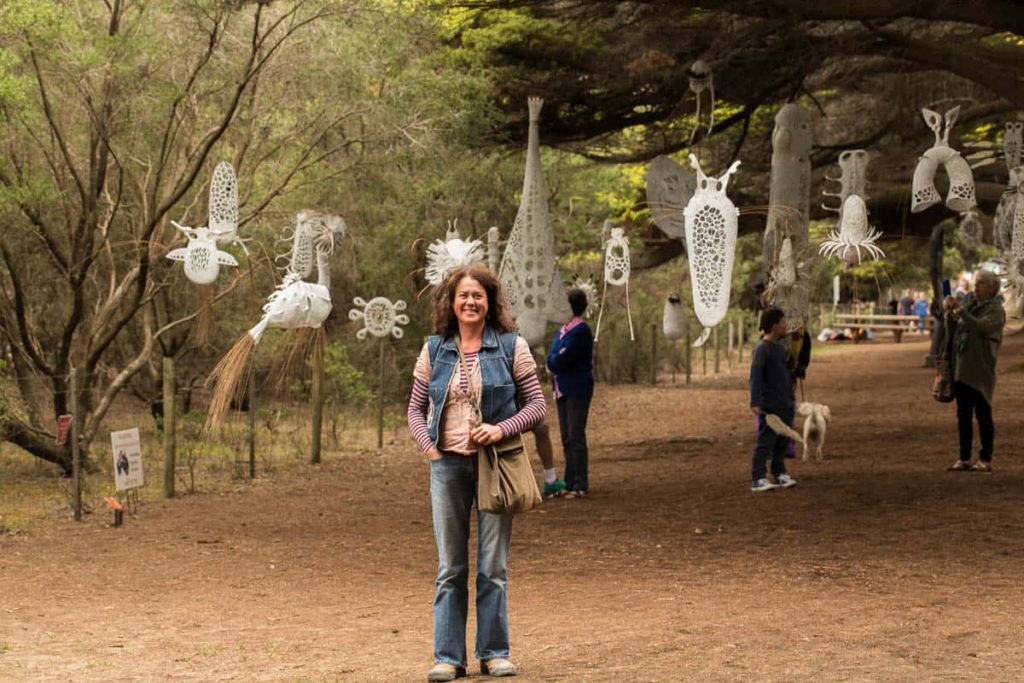 From Sumatra to Bellbrae: A Jenny Crompton story - Jenny Crompton travelled to Sumatra where she learnt wood carving from a traditional datu spirit man. This gave her an appreciation of culture, but it wasn't her own. On discovering her Wadawurrung ancestry, she has developed a unique language of art from the kelp of the coast that is both her inspiration and rediscovered Country.
From Sumatra to Bellbrae: A Jenny Crompton story - Jenny Crompton travelled to Sumatra where she learnt wood carving from a traditional datu spirit man. This gave her an appreciation of culture, but it wasn't her own. On discovering her Wadawurrung ancestry, she has developed a unique language of art from the kelp of the coast that is both her inspiration and rediscovered Country.  Global Indigenous Runway: Lisa x Verner x Sarah - Global Indigenous Runway involved a three-way collaboration between an Indigenous artist (Lisa Waup), fashion designer (Ingrid Verner) and retail manager at Craft (Sarah Weston). The results take two-dimensional designs onto the body and into the world.
Global Indigenous Runway: Lisa x Verner x Sarah - Global Indigenous Runway involved a three-way collaboration between an Indigenous artist (Lisa Waup), fashion designer (Ingrid Verner) and retail manager at Craft (Sarah Weston). The results take two-dimensional designs onto the body and into the world.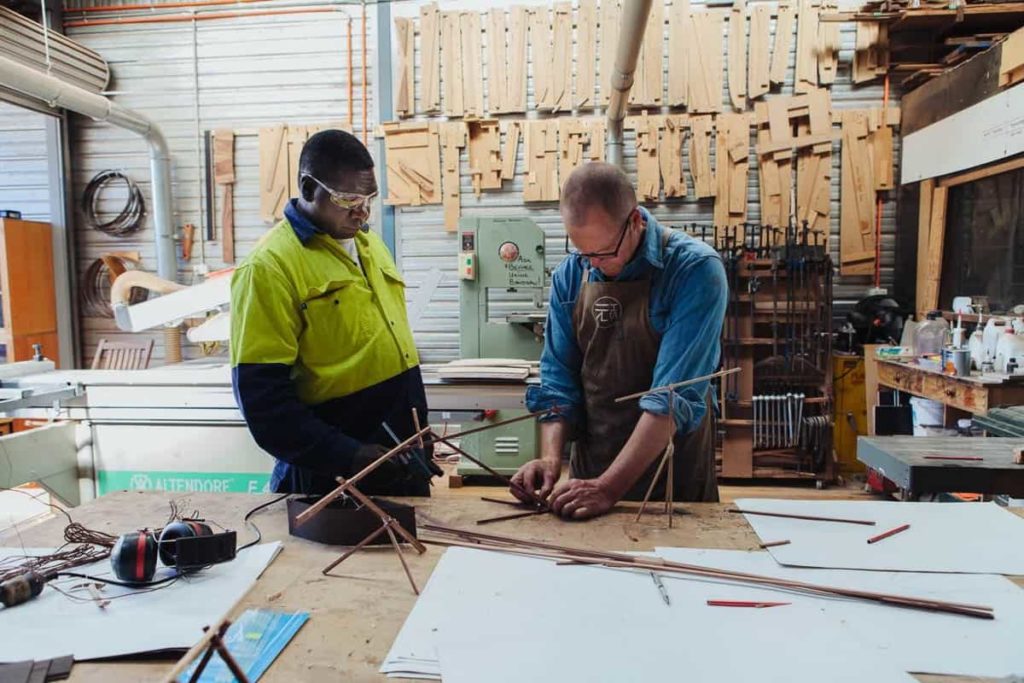 Two-Ways Learning – The gift that keeps on giving - How do incommensurate cultures work together? How do they connect while acknowledging differences? Bala ga Lili (Two-ways Learning) (2016) is a cross-cultural collaboration between Melbourne furniture designer, Damien Wright and Yolngu man, Bonhula Yunupingu, It was exhibited at Castlemaine Art Museum’s 2017 as part of The Extractive Frontier: Mining For Art, co-curated by Beverley Knight and Clare Wright.
Two-Ways Learning – The gift that keeps on giving - How do incommensurate cultures work together? How do they connect while acknowledging differences? Bala ga Lili (Two-ways Learning) (2016) is a cross-cultural collaboration between Melbourne furniture designer, Damien Wright and Yolngu man, Bonhula Yunupingu, It was exhibited at Castlemaine Art Museum’s 2017 as part of The Extractive Frontier: Mining For Art, co-curated by Beverley Knight and Clare Wright. Return to the source: Women’s work thrives in Utopia - Michelle Montgomery follows the story of Willie Weston fabrics, which helps return indigenous images from Utopia back to their craft roots
Return to the source: Women’s work thrives in Utopia - Michelle Montgomery follows the story of Willie Weston fabrics, which helps return indigenous images from Utopia back to their craft roots Finding yourself: ceramics of Bankstown Koori Elders Group - Eva Czernis-Ryl visits the Bankstown Koori Elders Group and finds a thriving ceramics scene. This demonstrates the importance of art centres as spaces to build collective energy.
Finding yourself: ceramics of Bankstown Koori Elders Group - Eva Czernis-Ryl visits the Bankstown Koori Elders Group and finds a thriving ceramics scene. This demonstrates the importance of art centres as spaces to build collective energy.  Craft classic: Jawun - We learn from Abe Muriata about the making of the “Jawun”, a bicornual basket, which is a handsome object made from cane found in the rainforest and revered icon of Australian material culture. We also hear from Brisbane architect Christina Waterson what it is like to live with a jawun.
Craft classic: Jawun - We learn from Abe Muriata about the making of the “Jawun”, a bicornual basket, which is a handsome object made from cane found in the rainforest and revered icon of Australian material culture. We also hear from Brisbane architect Christina Waterson what it is like to live with a jawun. 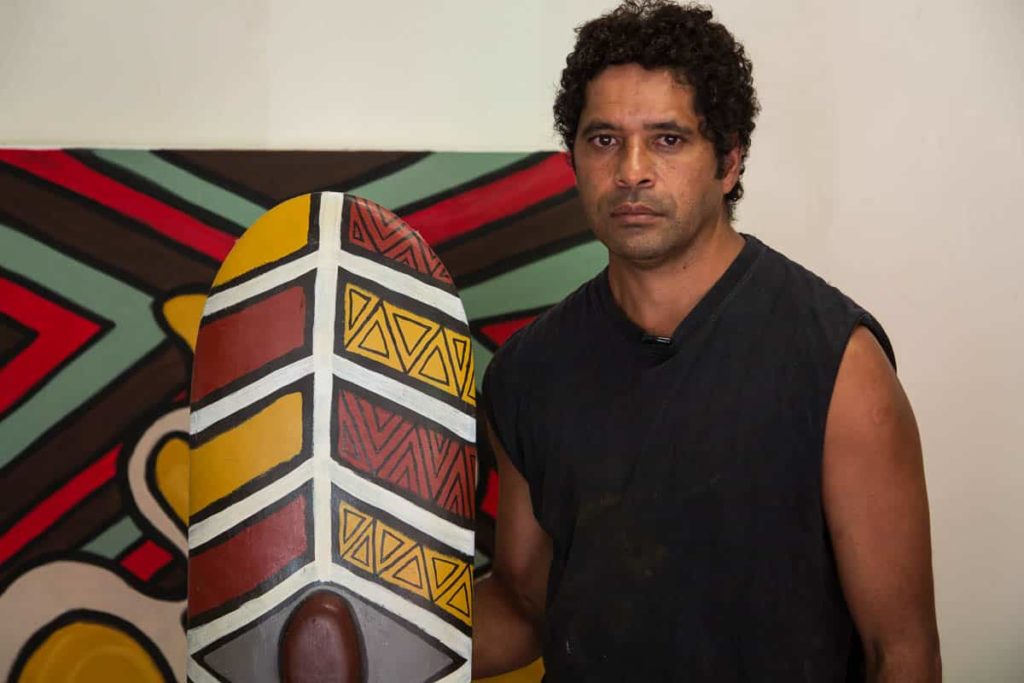 Revival of Rainforest Culture – interview with Napolean Oui - Peter Hylands interviews Queensland artist Napolean Oui about Djabugay culture in the Queensland rainforest. The artist reflects on his interpretation of traditional art forms, including shields.
Revival of Rainforest Culture – interview with Napolean Oui - Peter Hylands interviews Queensland artist Napolean Oui about Djabugay culture in the Queensland rainforest. The artist reflects on his interpretation of traditional art forms, including shields.  In Ernabella, doors open for Aboriginal jewellery - An ambitious Australian project has recently emerged. The Indigenous Jewellery Project was initiated by Emily McCulloch Childs and to date has involved Melanie Katsalidis, Kate Rohde and Melinda Young. We learn from Emily about its origins, values, methods and future ambitions.
In Ernabella, doors open for Aboriginal jewellery - An ambitious Australian project has recently emerged. The Indigenous Jewellery Project was initiated by Emily McCulloch Childs and to date has involved Melanie Katsalidis, Kate Rohde and Melinda Young. We learn from Emily about its origins, values, methods and future ambitions. 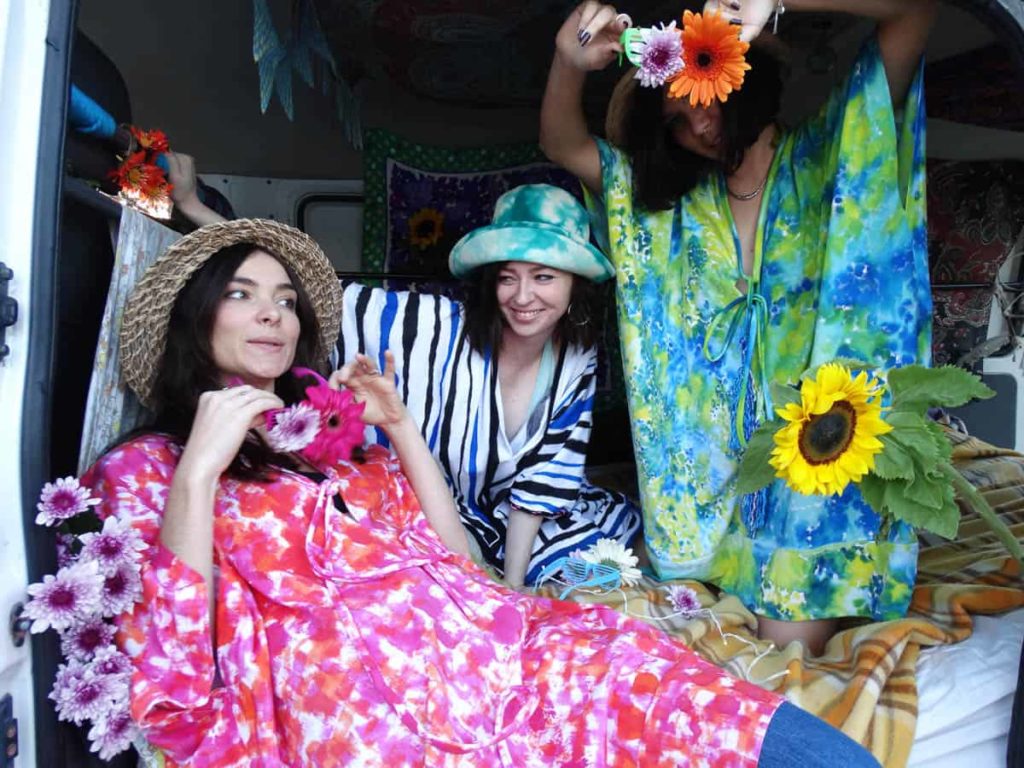 A Brighter Pattern for a Better Place – The Queensland fashion of Elisa Jane Carmichael and Carla van Lunn - Elisa Jane Carmichael belongs to the Quandamooka people of Minjerribah, North Stradbroke Island. Carla van Lunn is a fashion lecturer at the Queensland University of Technology and founder of Maison Briz Vegas, an experimental and ethical fashion house. Peter van Lunn writes about the alchemy of their vibrant collaboration.
A Brighter Pattern for a Better Place – The Queensland fashion of Elisa Jane Carmichael and Carla van Lunn - Elisa Jane Carmichael belongs to the Quandamooka people of Minjerribah, North Stradbroke Island. Carla van Lunn is a fashion lecturer at the Queensland University of Technology and founder of Maison Briz Vegas, an experimental and ethical fashion house. Peter van Lunn writes about the alchemy of their vibrant collaboration. CIAF and Ghost Net art of the Far North - Sonja Anderson writes about the current status of Ghost Nets and why it has been so successful in communities of Far North Queensland.
CIAF and Ghost Net art of the Far North - Sonja Anderson writes about the current status of Ghost Nets and why it has been so successful in communities of Far North Queensland. Learning and sharing traditional plant knowledge - Penny Algar and Lorraine Connelly-Northey talk about the importance of river red gum and what inspired the Murray River Cloak.
Learning and sharing traditional plant knowledge - Penny Algar and Lorraine Connelly-Northey talk about the importance of river red gum and what inspired the Murray River Cloak.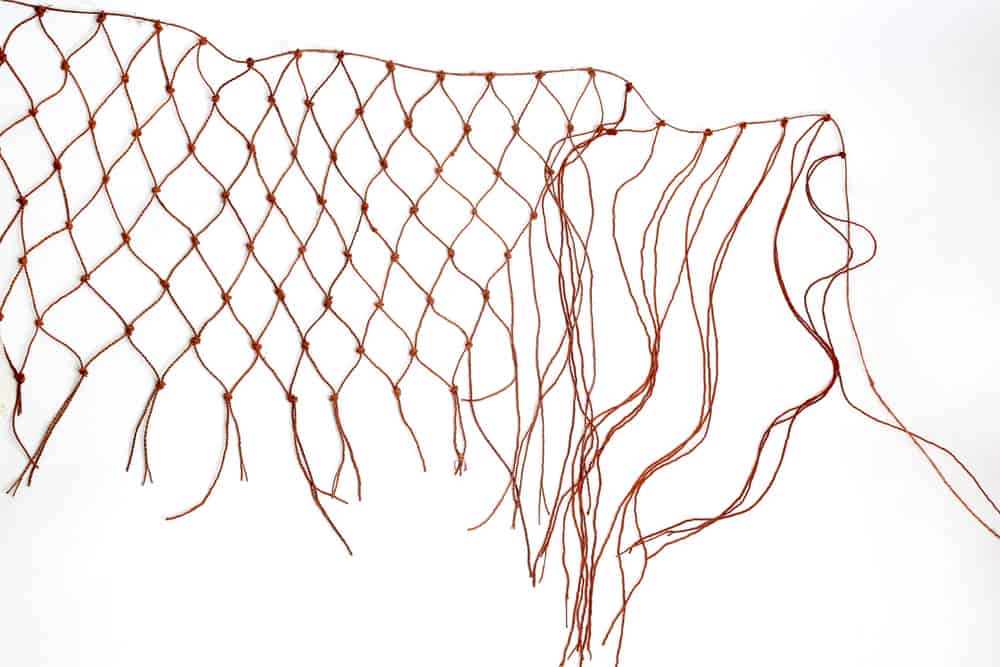 Yilaalu – objects for carrying stories - Lucy Simpson interprets the Yuwaalaraay word 'Yilaalu' as an art installation to touch and behold.
Yilaalu – objects for carrying stories - Lucy Simpson interprets the Yuwaalaraay word 'Yilaalu' as an art installation to touch and behold.
